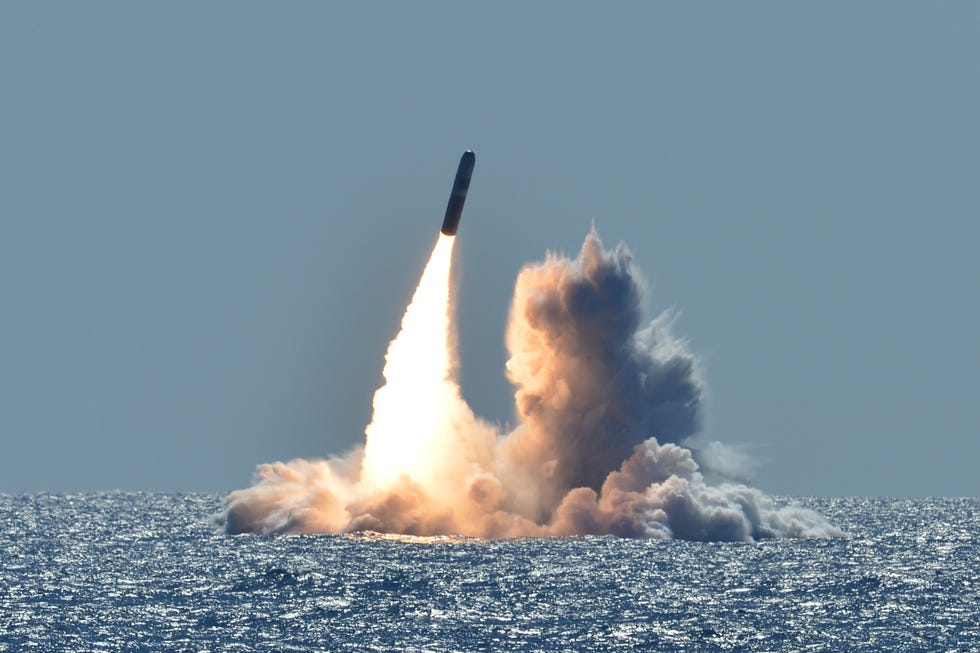Thursday, December 5, 2019
Why the Pentagon Says It Needs Low-Yield Nukes
From the Dept of Very Bad Ideas: The military thinks a smaller bomb is essential for deterring—and fighting—adversaries.
By Kyle Mizokami
Popular Mechanics
Dec 5, 2019 - The Pentagon reaffirmed its determination to field a new nuclear weapon designed to allow the U.S. to match Russian and Chinese nukes on the battlefield. In an interview with Seapower magazine, Undersecretary of Defense for Policy John Rood stated that the nukes are necessary to counter Russian plans to use low-yield nuclear weapons early in a conflict, frightening its enemies into a ceasefire. According to Seapower:
“Rood said the need for the new low-yield weapons came from intelligence reports of Russian emphasis on the use of nuclear weapons earlier in a conflict, “and the mistaken belief that they have the ability to use a low-yield nuclear weapon earlier in the conflict in a way to deter response.” He cited Russian President Vladimir Putin’s public statements advocating the early use of low-yield nuclear weapons “as a way of deterring an adversary.”
What kind of scenario is Rood thinking about? Imagine Russia launched a blitzkrieg-style attack on Poland and the Baltic states of Latvia, Estonia, or Lithuania. Russia quickly conquers all four countries before NATO can effectively muster a response. While NATO assembles a reaction force, Russia explodes a small, low-yield nuclear weapon at the Polish border. The detonation would serve warning that Russia was now prepared to use nuclear weapons to defend its conquest, forcing NATO to choose between standing down or using nukes of its own.
The Pentagon thinks that having small, low-yield nuclear missiles like the W-76-2 would allow NATO to match Russia’s first use of a low-yield device, meeting Moscow small nuke for small nuke. The current lack of a smaller, missile-launched nuclear weapon means that the alliance would be forced to consider using a larger nuke to retaliate, escalating the crisis.
The W76-2 is a modification of the W76-1 warhead that arms the Trident D-5 submarine launched ballistic missile. A W76-1 has a yield of 100 kilotons—by comparison, the Hiroshima bomb was about 16 kil0tons. According to the Federation of American Scientists, the W76-2 is simply a W76-1 thermonuclear weapon configured to only partially explode. A typical thermonuclear bomb is a two-stage design incorporating a primary nuclear bomb “boosted” to a much higher explosive yield by a “secondary” of fusion fuel. According to FAS:
The National Nuclear Security Administration (NNSA) has said the low-yield version, the W76-2, would be configured “for primary-only detonation.” This could mean a yield of less than 10 kilotons.
Of course, not everyone likes this idea of new nuclear weapons. The Union of Concerned Scientists states that the U.S. already has low-yield nuclear bombs, a likely reference to the B61 series of tactical nuclear bombs. The B61 gravity bomb has a “dial a yield” option that allows ground crews to set it to 300 tons (equivalent to three hundred 2,000-pound high explosive bombs), 1.5 kilotons, 10 kilotons , or 50 kilotons.
Furthermore, the UCS claims that placing the warhead on a submarine-launched ballistic missile that typically carries a much more powerful warhead will leave adversaries like Russia unclear what kind of warhead the missile is carrying. Moscow could interpret an incoming missile as the first step in all-out attack and act accordingly.
The W76-2 program is set to cost $8.25 billion dollars. Development was reportedly swift, with the weapon going into production in January 2019 at the Pantex nuclear weapons plant in Texas. It is unknown when the warhead will go to sea—if it has not already done so.
Source: Seapower magazine
Subscribe to:
Post Comments (Atom)


No comments:
Post a Comment